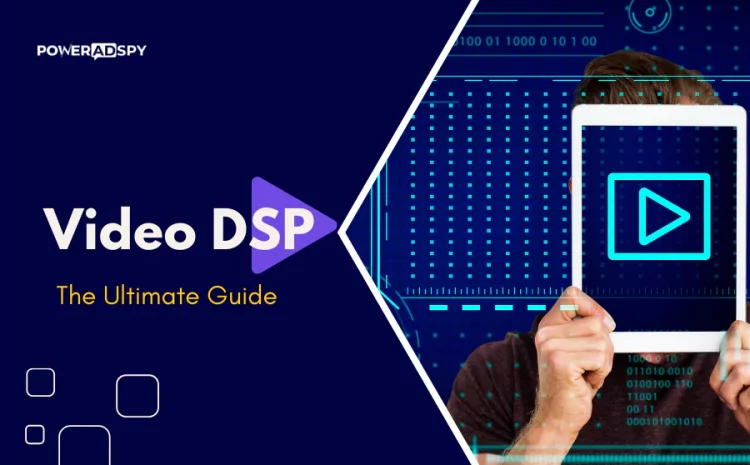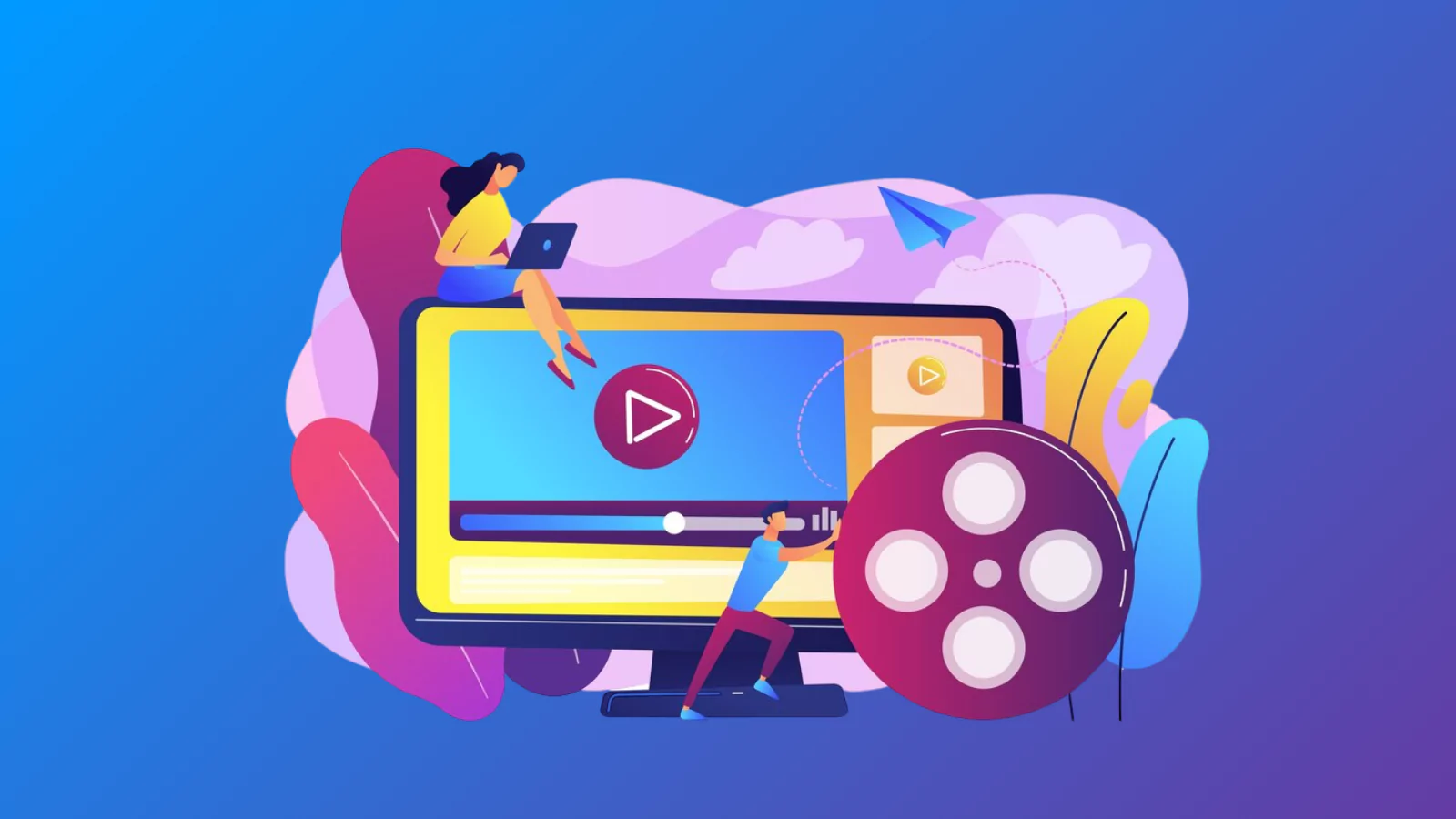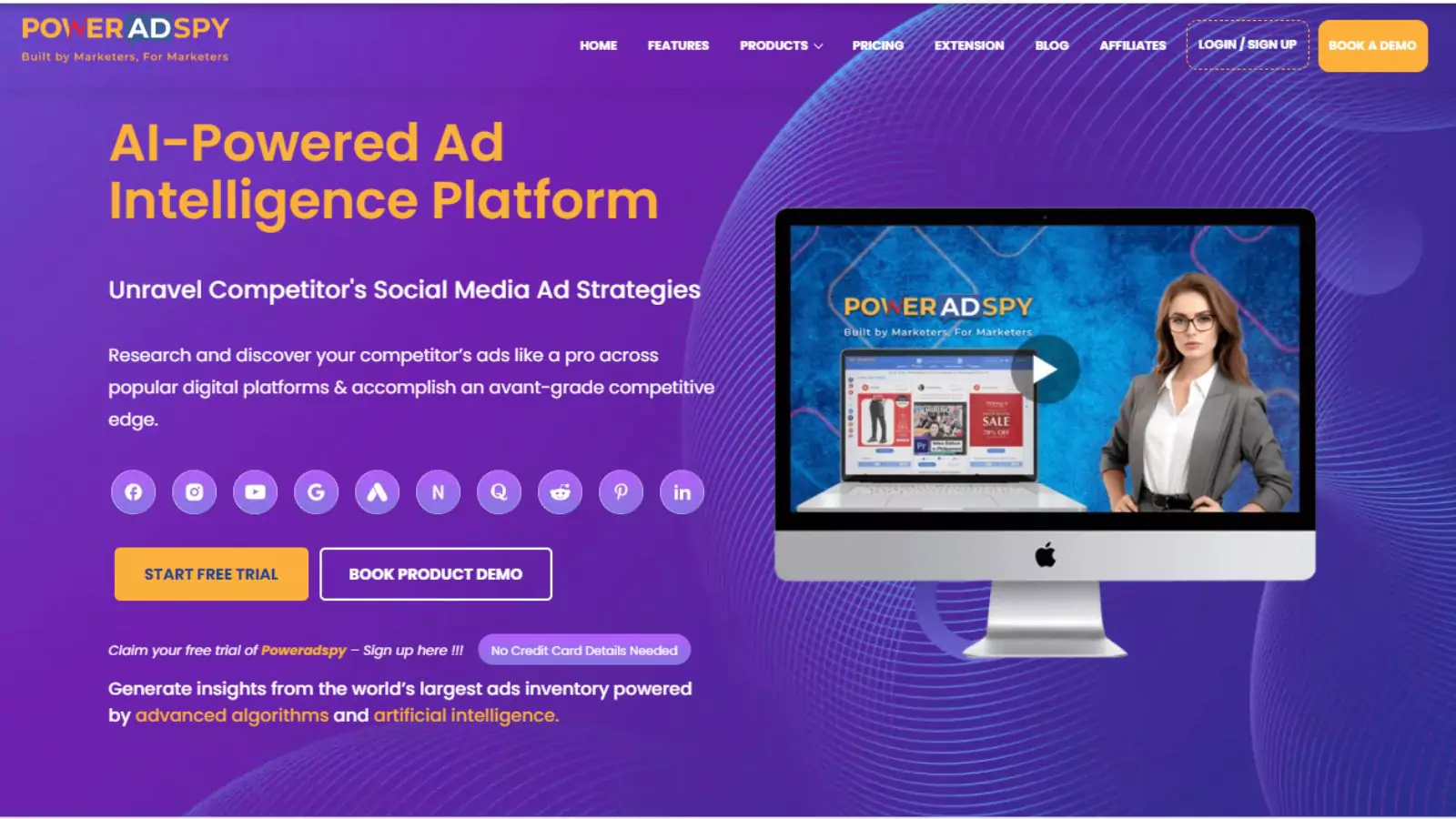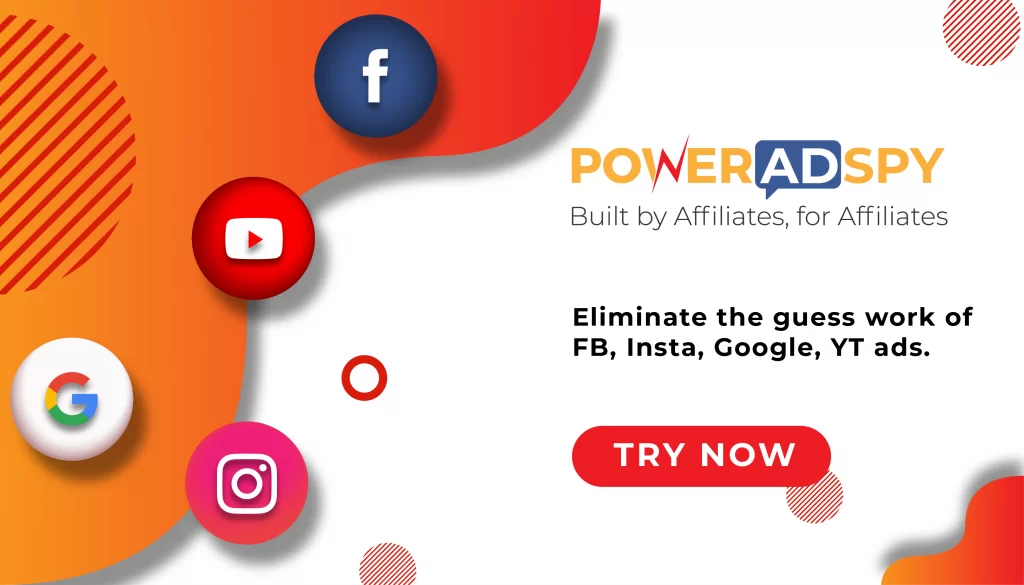Video DSP: The Ultimate Guide To DSP For Video Advertising
Video ads dominate digital marketing, accounting for over 80% of all internet traffic. But running successful video campaigns isn’t just about great creatives—it’s about placing them where they’ll perform best. That’s where a Video DSP (Demand-Side Platform) comes in.
A Video DSP helps advertisers buy video ad inventory programmatically, ensuring better targeting, efficiency, and performance. But how does it work? What makes it different from a standard DSP? And how can you leverage it for maximum impact?
In this guide, we’ll break down everything you need to know about Video DSPs—how they function, their key benefits, and how to choose the right one for your campaigns.
Listen To The podcast Now!
What Is A Video DSP? (And How Does It Differ From a Regular DSP?)
A DSP video is a specialized demand-side platform designed to buy video ad impressions in real time. While a general DSP handles multiple ad formats (display, native, audio), a Video DSP focuses exclusively on video, ensuring higher viewability, better placements, and optimized performance.
Key Features of a Video DSP
- Programmatic Video Buying: Automates ad placements across publishers.
- Advanced Targeting: Reaches audiences based on behavior, interests, and demographics.
- VAST/VPAID Support: Ensures compatibility with interactive video ads.
- Real-Time Bidding (RTB): Buys impressions at the best price through auctions.
- Fraud Prevention: Filters out invalid traffic (IVT) to protect ad spend.
Why does this matter?
Because DSP ads are expensive, you need a platform that maximizes every dollar spent. A DSP video ensures your ads appear on premium sites, in front of engaged viewers, and at the right price.
How A Video DSP Works: The Step-by-Step Process
Understanding the workflow of a Video DSP (Demand-Side Platform) is critical for advertisers who want to maximize their video ad performance. Unlike manual buying, a DSP video automates the entire process, ensuring precision, speed, and scalability. Let’s walk through how it works.
- Advertiser Sets Up a Campaign
- Defines Targeting Parameters: The advertiser specifies audience demographics (age, location, interests), budget constraints, and key performance indicators (KPIs) like viewability or completion rates.
- Uploads Video Creatives: Ads are formatted using VAST/VPAID tags (industry standards for interactive video ads) to ensure compatibility across platforms.
A well-configured Video DSP campaign aligns ads with the right viewers, minimizing wasted spend.
2. Real-Time Bidding (RTB) Begins
- Ad Request Triggered: When a user visits a publisher’s site or app, an ad space becomes available, and an auction request is sent to the DSP video.
- Bid Evaluation: The Video DSP analyzes the user’s profile (browsing history, device type) and calculates the optimal bid in milliseconds.
Key advantage: RTB ensures advertisers pay fair market prices for high-value impressions.
3. Ad Placement & Delivery
- Winning Bid Secured: The DSP video with the highest bid wins the auction, and the ad loads instantly on the publisher’s page.
- Performance Tracking: Metrics like views, clicks, and video completion rates are recorded in real time.
- Behind the scenes: The DSP video uses machine learning to prioritize high-performing placements.
4. Optimization & Reporting
- Dynamic Bid Adjustments: The Video DSP continuously refines bids based on performance data (e.g., lowering bids for low-viewability sites).
- Detailed Analytics: Advertisers access dashboards showing ROI, audience engagement, and fraud detection insights.
But what types of video ads can you run with a DSP video? Let’s explore the best formats.
The 5 Key Video Ad Formats (And When to Use Them)
Video DSPs support several distinct ad formats, each with its strengths. Think of them like tools in a toolbox – you wouldn’t use a hammer when you need a screwdriver. Here’s how to choose the right one:
In-Stream Ads: The TV Commercial of Digital
These are the ads that play before, during, or after video content you’re trying to watch (like YouTube video ads). They’re great for brand building because you’ve got a captive audience, but there’s a catch – viewers can often skip them after 5 seconds. The trick is making those first 5 seconds count with something attention-grabbing.
Out-Stream Ads: The Ninjas of Video Advertising
These ads pop up in unexpected places – between paragraphs of an article you’re reading, for example. They autoplay as you scroll past them (usually without sound at first). What makes them powerful is that they don’t interrupt content, making them less annoying to viewers while still getting your message across.
CTV Ads: The New Primetime
Connected TV ads appear on streaming platforms like Hulu or through devices like Roku. They’re essentially digital versions of traditional TV commercials, but smarter. You can target specific households rather than just guessing based on what show they’re watching. The downside? They’re premium inventory, so they cost more.
Rewarded Ads: The “You Scratch My Back” Approach
Common in mobile games and apps, these ads give users something (like extra lives or premium content) in exchange for watching. The psychology here is brilliant because viewers choose to watch, they’re engaged, rather than just tolerating your message.
Interactive Ads: The Two-Way Conversation
These advanced ads let viewers click, swipe, or interact with the content. Imagine being able to browse products or customize a car right within the ad itself. They’re more expensive to produce but can drive direct sales better than passive formats.
Which one wins? That’s like asking whether a sports car is better than a pickup truck – it depends on what you need to accomplish. Brand awareness? Go with in-stream or CTV. Direct response? Interactive or rewarded ads might be your best bet. The smartest advertisers use a mix, tailored to where their audience is and what action they want them to take.
How To Choose The Right Video DSP (Without Losing Your Mind)
Let’s be real – picking a Video DSP can feel like online dating. There are lots of options, everyone looks good on the surface, but you won’t know if it’s the right match until you try working together. Here’s how to find “the one” without the heartbreak:
1. Inventory Quality: Are They Running With the Right Crowd?
You wouldn’t want your ads next to questionable content, right? Ask:
- “Who are your premium publisher friends?” (Looking for Hulu, ESPN, legit news sites – not just random blogs)
- “Is your CTV/OTT inventory the real deal?” (Some DSPs just repackage cheap web video and call it “premium”)
Think of it like choosing a restaurant – you want to know if they source quality ingredients or just microwave frozen stuff.
2. Targeting: Can They Find Your Perfect Audience?
Basic targeting is like shouting into a crowd. Good video targeting is like having a heart-to-heart with your ideal customer. Look for:
- Contextual smarts (your running shoe ad appears on fitness videos, not cat compilations)
- Behavioral understanding (targets people who watch similar content)
- CTV household intel (because you want to reach “families with kids,” not “college dorms”)
3. Fraud Protection
Ad fraud is the pickpocket of digital marketing. Make sure your DSP has:
- Bouncers at the door (IAS, DoubleVerify integrations)
- A good BS detector (filters out fake views and bots)
- X-ray vision (spots low-quality placements)
Because nothing hurts more than paying for “views” from someone’s grandma who left the TV on.
4. Reporting
You deserve clear answers to:
- “Are people watching my ads?” (Completion rates tell the truth)
- “When do they tune out?” (Quartile reporting shows the drop-off points)
- “Can I fix this mid-campaign?” (Real-time alerts let you pivot fast)
Beware of DSPs that give you reports like a bad report card – all vague comments and no useful details.
5. Pricing: No Hidden Surprises
Pricing models explained for normal individuals:
- CPM: Pay per thousand eyeballs (good for branding)
- CPCV: Only pay if someone watches the whole ad (safer bet)
- Hybrid: The “I’ll have what they’re having” option
Finally, let’s discuss how to maximize your DSP video campaigns.
Also Read
A Comprehensive Guide to DSP Advertising: How To Get Started
5 Best YouTube Video Advertising Examples
How To Maximize OTT Video Ads For Better Results?
Best Practices For Video DSP Campaigns
Running video ads through a Demand-Side Platform (DSP) gives you precision and scale, but only if you optimize correctly. Here’s how to ensure your campaigns deliver maximum impact without wasting budget.
1. Prioritize Viewability
A video ad that plays in the corner of a page, muted and ignored, is a wasted impression. Viewability (the percentage of ads seen by users) directly impacts performance.
- Aim for >70% viewability: Platforms like Moat or IAS track this metric. If your rates are lower, reassess placements—fraudulent or poorly positioned inventory drags performance down.
- Stick to premium publishers: Low-quality sites often have high “background ad” rates. A Video DSP with strict inventory filters helps avoid this.
- Test player sizes: Larger video players (like 640×360) tend to have higher viewability than smaller banners.
Pro Tip: Combine viewability tracking with completion rates. A 30-second ad watched for 28 seconds is far more valuable than one abandoned after 5 seconds.
2. Control Frequency: Avoid Annoying Your Audience
Ever seen the same ad five times in an hour? That’s ad fatigue, and it kills engagement.
- Cap exposures at 3–5 per user/week: Enough for recall, not enough to irritate. Most DSP video let you set this rule campaign-wide.
- Segment by user behavior: Heavy engagers (e.g., viewers who clicked) might tolerate higher frequency than passive scrollers.
- Rotate creatives: Even with capping, stale ads lose effectiveness. Swap variants every 2–3 weeks.
Example: A travel brand limited frequency to 3x/week per user—CTR rose 22% because audiences weren’t overwhelmed.
3. A/B Test Creatives Relentlessly
Your Video DSP automates media buying, but creative quality still makes or breaks results.
- Test hooks: Does your ad open with a question (“Tired of slow internet?”) or a bold claim (“We’re the fastest”)? Try both.
- Try different CTAs: “Shop Now” vs. “Learn More” can attract entirely different audiences.
- Vary lengths: Some platforms reward shorter ads (6–15 seconds); others (like CTV) perform better with 30-second storytelling.
Case in Point: A DTC skincare brand tested five variants—the winner (a user-generated-style clip) had 3x higher conversions than polished studio ads.
4. Double Down on CTV & OTT Ads
Streaming isn’t the future—it’s the present. Connected TV (CTV) and Over-the-Top (OTT) platforms (Roku, Hulu, etc.) offer:
- Highly engaged viewers: People choose to watch streaming content (unlike skippable pre-roll).
- Premium brand environments: Ads appear alongside HBO or Netflix originals, not random blogs.
- Advanced targeting: Layer first-party data (e.g., “luxury car shoppers”) onto streaming habits.
Strategy Note: CTV ads work best for upper-funnel awareness. Pair them with retargeting via mobile/web video for full-funnel impact.
5. Fight Fraud Like Your Budget Depends on It (Because It Does)
Invalid traffic (IVT)—bots, accidental clicks, fake sites—drains 20–30% of ad spend if unchecked.
- Enable IVT filters: Tools like DoubleVerify or Integral Ad Science block fraudulent impressions pre-bid.
- Monitor suspicious patterns: Sudden spikes in “completions” from one site? Likely bots.
- Demand transparency: Some Video DSPs hide low-tier inventory behind vague labels like “remnant.” Insist on site lists.
Red Flag: Viewability rates above 90% sound great—but if paired with zero conversions, it’s likely fraud.
Bonus: Spy on Competitors to Stay Ahead
A DSP video optimizes placements, but an ad intelligence tool reveals what rivals are doing.
Example: A fitness brand used competitive data to discover rivals ignored vertical video ads—their test campaign saw 40% lower CPAs.
Curious if a tool like this really exists? You’re in luck—let’s dive into a powerful ad intelligence solution that does exactly that.
PowerAdSpy – Ad Spy Tool
With access to 500 million+ ads from over 100 countries, PowerAdSpy stands as one of the most comprehensive ad intelligence platforms available today. It equips marketers, advertisers, and brands with the tools to study, compare, and replicate high-performing social media ads with precision. Whether you’re fine-tuning your next campaign or analyzing your competition, PowerAdSpy simplifies the process of discovering what works in your niche, based on real-time data and proven engagement.
What PowerAdSpy Enables You to Do
Filter by Ad Positions
PowerAdSpy enables you to segment ads based on their placements—such as News Feed or Side Location—helping you analyze which positions yield better engagement and conversions in your industry.
Gain Complete Visibility
It allows you to view live ad posts directly from within the platform. This transparency gives you a firsthand look at actual user interactions, helping you assess how audiences are responding to ads in real-time.
Access To Global Ad Data
With a constantly growing repository of millions of ads from over 100 countries, PowerAdSpy helps you stay on top of what’s trending worldwide. Thousands of new ads are added daily, giving you a never-ending stream of creative inspiration.
Narrow Down Your Searches
It helps you streamline your research by allowing you to search ads based on niche-specific keywords, advertiser names, or competitor domains. You can also explore complete ad collections from top-performing brands to better understand their strategies.
Bookmark Ads That Matter
When you come across compelling ad creatives, PowerAdSpy makes it easy to save them with a single click. These ads are added to your ad library, so you can revisit and reference them whenever needed, without having to search again.
Search With Precision
Using its powerful search algorithm, PowerAdSpy helps you pinpoint the exact ads you’re looking for. Search by keywords, filter by engagement metrics like likes, shares, and comments, and sort by date to find what’s most relevant to your goals.
Access Engagement-Oriented Insights
It delivers detailed engagement analytics, enabling you to identify which ads resonate with their audiences. These insights help you distinguish winners in your niche from those that simply fade into the background.
Explore Both Video And Image Ads
PowerAdSpy supports a rich mix of ad formats, including both image and video creatives. It helps you understand the kind of visual content your audience connects with most, and even allows you to download video ads for deeper analysis or inspiration.
Identify GEO-Targeted Campaigns
It provides geo-specific data about where your competitors’ ads are performing best. This helps you spot high-conversion regions and uncover new audiences that are most likely to engage with your offers.
Sort By Call-to-Action Types
PowerAdSpy enables you to analyze which Calls to Action (CTAs) are driving the most results in your niche. This insight lets you optimize your campaigns with high-converting CTA strategies based on real-world performance data.
Conclusion
Navigating the world of video advertising can feel like decoding a secret language. But a Video DSP simplifies the chaos. It doesn’t just get your ads “out there”—it puts them in front of the right people, on the right screen, at the right time. Whether you’re boosting brand awareness through CTV or driving clicks with rewarded ads, a well-chosen Video DSP makes every impression count.
The beauty of it? You don’t have to be a programmatic wizard to run smarter campaigns. With the right strategy, a bit of testing, and a clear focus on quality and performance, your video ads won’t just be seen—they’ll be remembered.
So as you plan your next move, remember: it’s not just about what you say in your video—it’s where, when, and to whom you say it. That’s the power of a great Video DSP.
Relevant FAQs
Can small businesses afford to use a Video DSP?
Yes, many DSP video offer flexible pricing models, including self-serve platforms with lower minimum spend requirements. This allows smaller advertisers to access premium video inventory without massive budgets.
How is a Video DSP different from YouTube Ads Manager or Facebook Ads Manager?
YouTube and Facebook offer video advertising within their own ecosystems. A Video DSP, on the other hand, gives you access to multiple ad exchanges and platforms—including CTV, mobile apps, and premium publisher sites—beyond any single platform’s inventory.
What kind of metrics should I track to measure the success of my Video DSP campaign?
Key metrics include viewability rate, video completion rate, cost per completed view (CPCV), click-through rate (CTR), and return on ad spend (ROAS). Engagement and brand lift studies can also help assess brand awareness campaigns.










